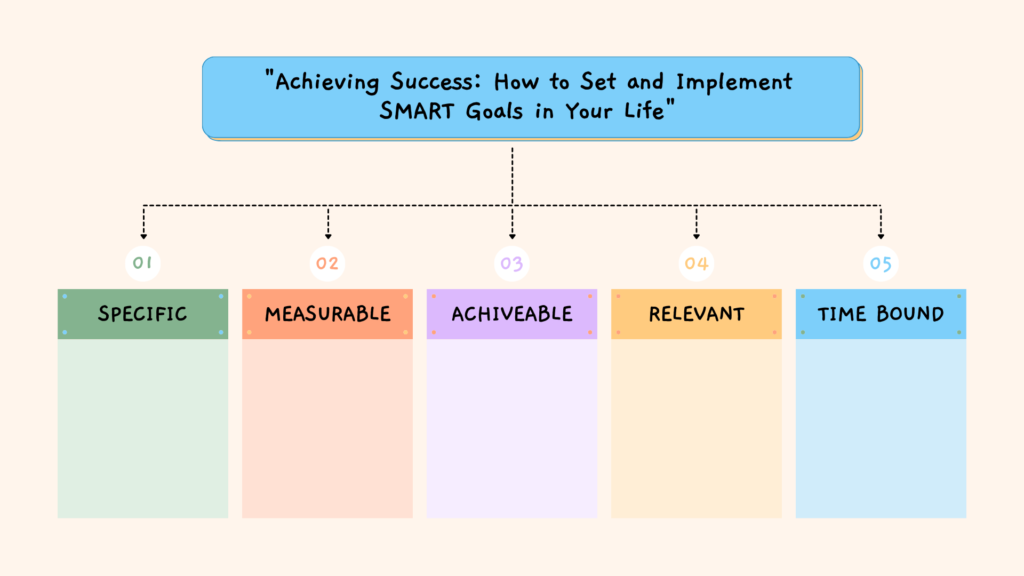
Leadership success is a highly sought-after goal for many professionals. It can lead to career advancement, increased job satisfaction, and personal growth. However, achieving leadership success is not overnight; it requires dedication, self-reflection, and continuous learning. This article will explore the essential steps and strategies to help you on your journey toward leadership success.
Understanding the Meaning of Leadership Success
Before diving into the steps to achieve leadership success, it’s crucial to understand what it means. Leadership success is not solely about reaching a high-ranking position or having a large team under your supervision. Instead, it’s about inspiring others, fostering a positive work environment, and driving your team toward a shared vision and goals. Successful leaders are those who can adapt to various situations, communicate effectively, and empower their team members to reach their full potential.
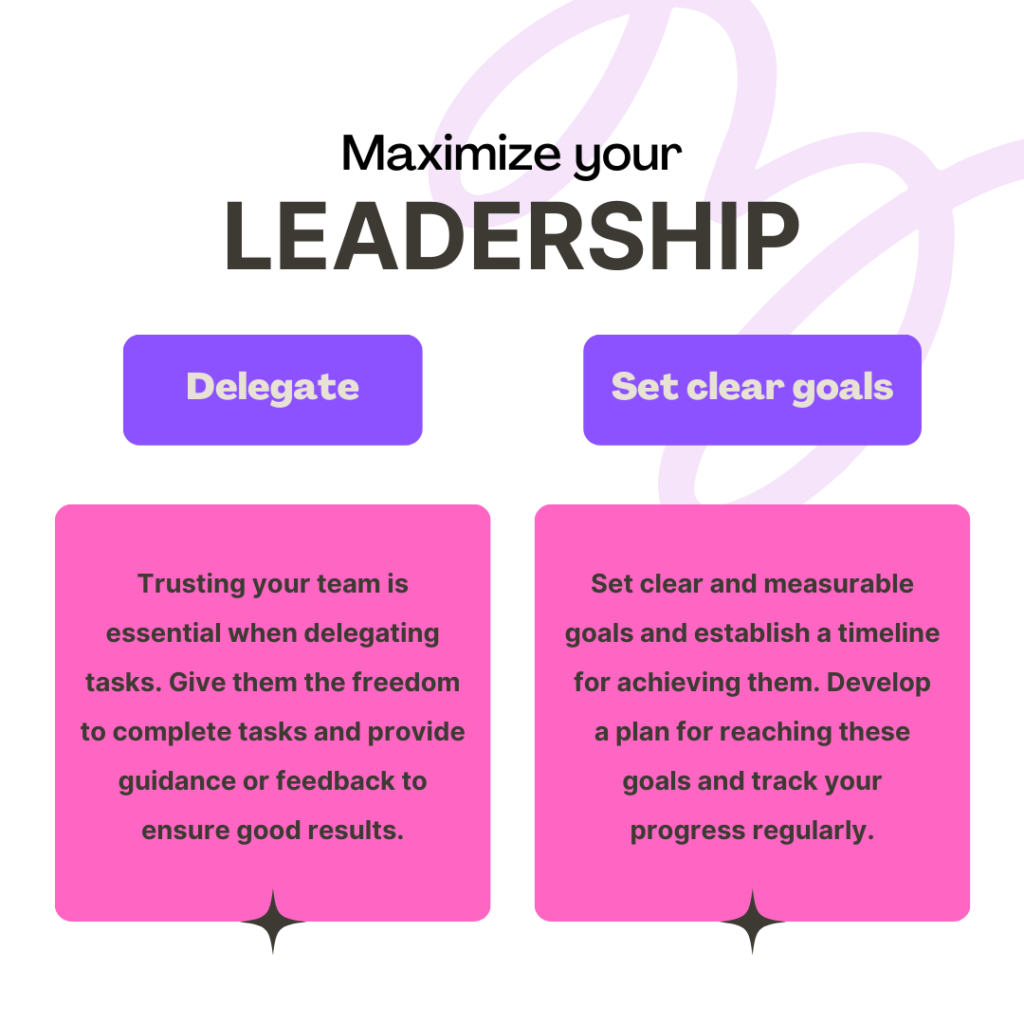
Successful leaders and leadership success
Successful leaders and leadership success are closely intertwined concepts. Successful leaders are those who have achieved leadership success by effectively guiding their teams to reach shared goals and objectives. They possess a combination of skills, qualities, and experiences that enable them to inspire and empower their team members, fostering a positive work environment and driving organizational growth.
Some key characteristics of successful leaders that contribute to leadership success include:
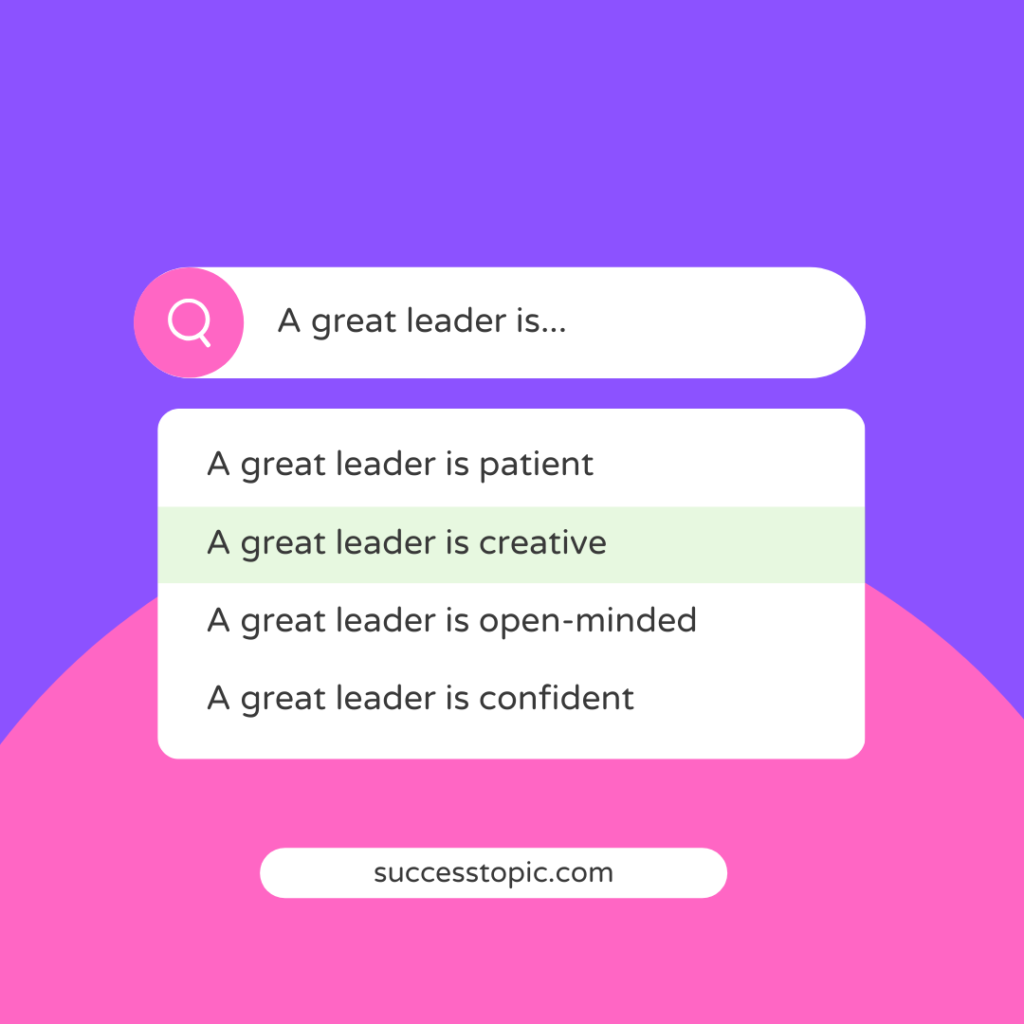
Vision and goal-setting
Successful leaders have a clear vision for their organization and set realistic, achievable goals aligning with it. They communicate these goals to their team and ensure everyone is working towards the same objectives.
Emotional intelligence
Effective leaders possess high emotional intelligence, enabling them to recognize, understand, and manage their own emotions and those of their team members. This skill is crucial for building strong relationships, navigating challenging situations, and fostering a positive work environment.
Leading by example
Successful leaders lead by example, demonstrating the behaviors, work ethic, and attitude they expect from their team members. This approach helps to inspire and motivate the team to follow suit.
Open communication and collaboration
Effective leaders create a culture of open communication and collaboration within their teams. They encourage team members to share their ideas, concerns, and feedback, and they actively listen and respond to these inputs. This approach fosters innovation, problem-solving, and team engagement.
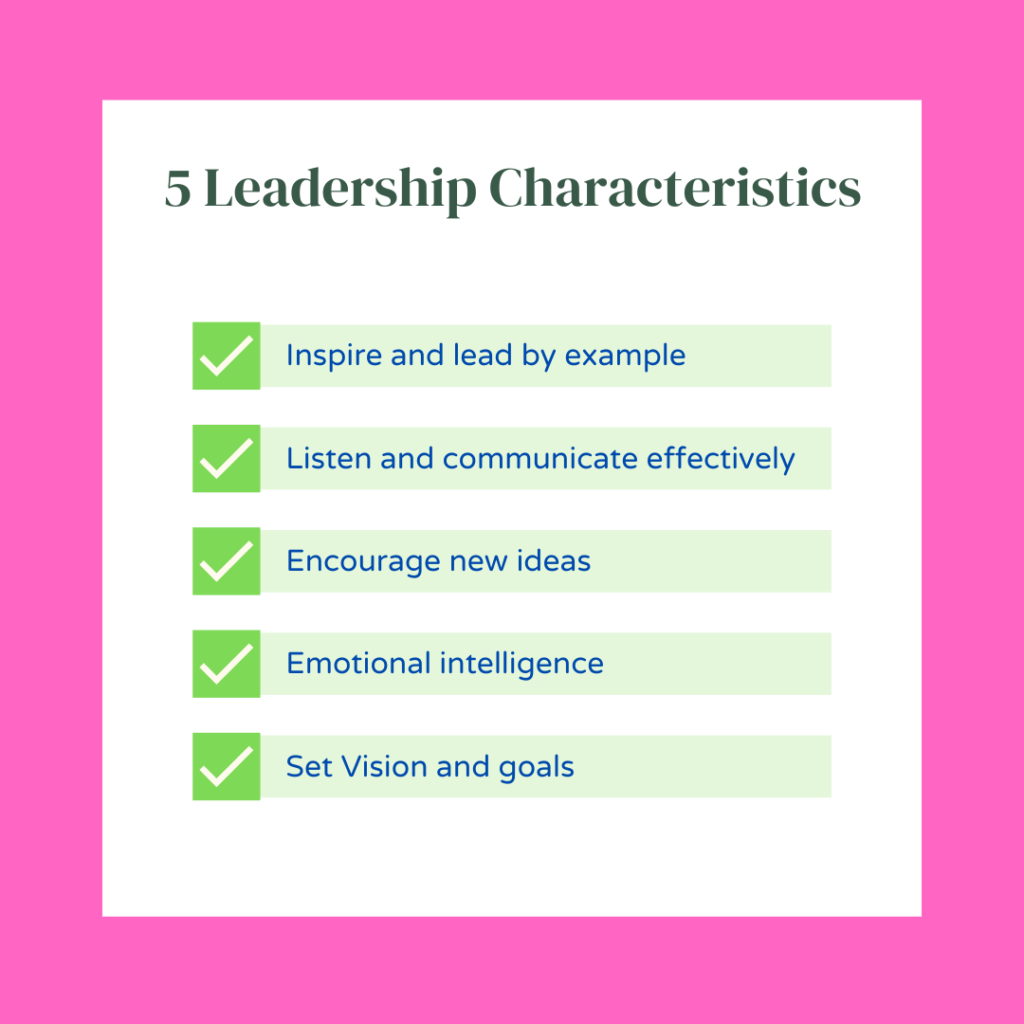
Empowerment and development
Successful leaders empower their team members by providing opportunities for growth and development, delegating tasks and responsibilities, and offering regular feedback and recognition. This approach helps to create a strong, capable workforce that is equipped to handle challenges and drive the organization toward its goals.
Adaptability and continuous learning
The business world is constantly evolving, and successful leaders must be willing to learn and adapt to these changes. They stay current with industry trends, new technologies, and best practices, ensuring their leadership skills remain relevant and effective in the ever-changing landscape.
How to achieve Leadership success step by step
1. Develop a Clear Vision and Set Goals
One of the first steps towards leadership success is to develop a clear vision and set achievable goals. This vision should be aligned with your organization’s mission and values. By creating a roadmap for your team, you can ensure everyone is working towards the same objectives, leading to increased productivity and unity.
To set effective goals, consider using the SMART criteria: Specific, Measurable, Achievable, Relevant, and Time-bound. This approach can help ensure your goals are well-defined and easily tracked and evaluated.
For example, how to set a clear vision and Goals
Here’s an example of how a leader in a software development company might develop a clear vision and set goals for their team:
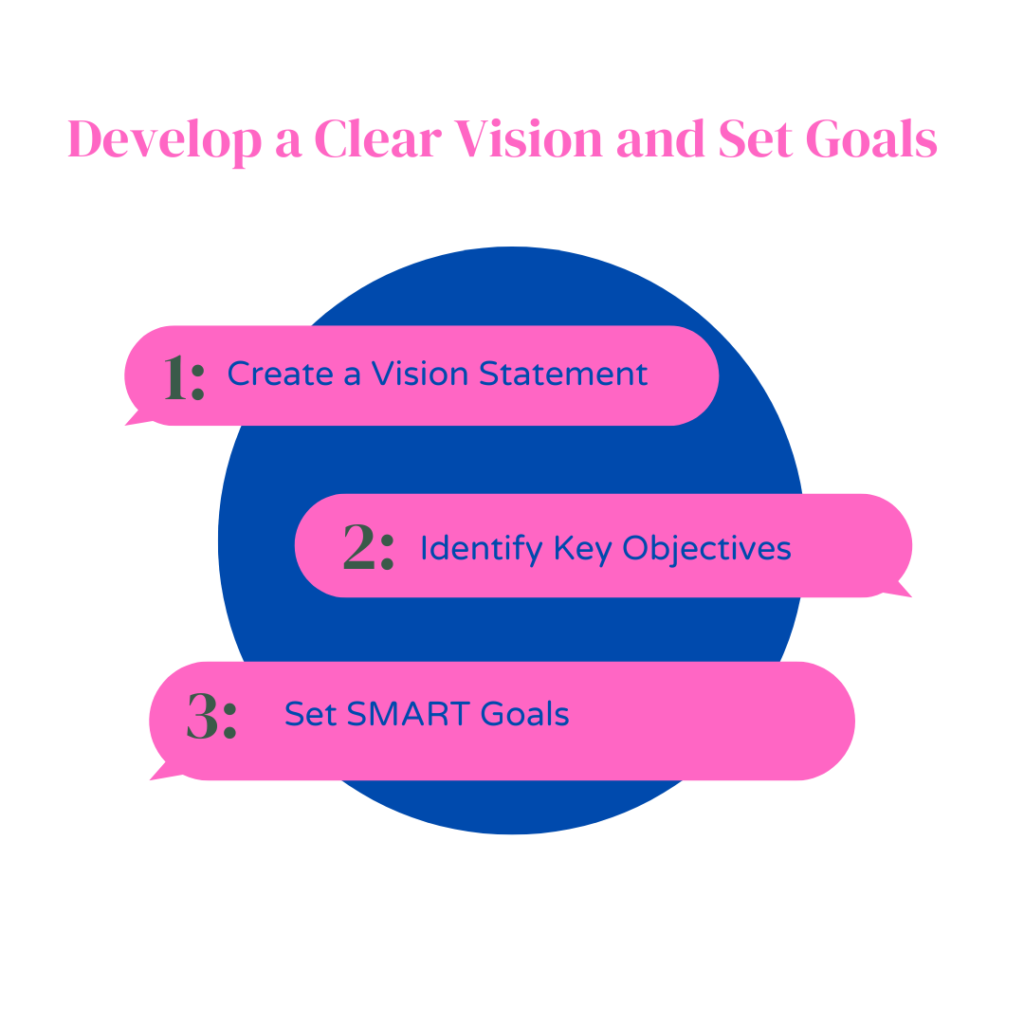
Step 1: Create a Vision Statement
The leader must first create a vision statement that captures the essence of the team’s purpose and aligns with the organisation’s overall mission. For example:
“Our vision is to become a leading software development team that delivers innovative, user-friendly, and secure solutions to help businesses streamline their operations and enhance customer experiences.”
Step 2: Identify Key Objectives
Next, the leader must identify the key objectives that will help the team achieve its vision. These objectives should be broad, long-term targets that address the main areas of focus for the team. For example:
- Develop cutting-edge software solutions that address market needs.
- Foster a culture of continuous improvement and innovation.
- Attract and retain top talent in the software development industry.
- Maintain strong relationships with clients and partners.
Step 3: Set SMART Goals
With the key objectives in mind, the leader can set specific, measurable, achievable, relevant, and time-bound (SMART) goals to guide the team’s efforts. These goals should be aligned with the key objectives and should be regularly reviewed and updated. For example:
Goal 1: Develop and launch a new project management software solution within the next 12 months.
Specific: The goal clearly states the desired outcome (develop and launch a new project management software solution).
Measurable: The goal can be measured by tracking the progress and completion of the software development project.
Achievable: Considering the team’s capabilities and resources, the goal is realistic.
Relevant: The goal aligns with the team’s vision and key objectives (develop cutting-edge software solutions).
Time-bound: The goal has a defined timeline (within the next 12 months).
Goal 2: Implement a quarterly employee training program to enhance team members’ skills and expertise.
Specific: The goal clearly states the desired outcome (implement a quarterly employee training program).
Measurable: The goal can be measured by tracking the number of training sessions conducted and employee participation.
Achievable: The goal is realistic, considering the team’s resources and commitment to professional development.
Relevant: The goal aligns with the team’s vision and key objectives (foster a culture of continuous improvement and attract top talent).
Time-bound: The goal has a defined timeline (quarterly).
By developing a clear vision and setting SMART goals, leaders can give their teams a sense of direction and purpose, ultimately contributing to leadership success. Regularly reviewing and updating these goals ensures that the team stays focused on achieving its vision and adapts to any changes in the business environment.
2. Cultivate Emotional Intelligence
Emotional intelligence (EI) is a crucial component of leadership success. EI refers to the ability to recognize, understand, and manage your own emotions and the emotions of others. By developing your emotional intelligence, you can improve your communication skills, enhance your relationships with team members, and better navigate challenging situations.
To improve your emotional intelligence, consider practising active listening, empathy, and self-awareness. Additionally, seek feedback from others to identify areas for improvement and growth.
How to cultivate emotional intelligence for leadership success?
Cultivating emotional intelligence (EI) is crucial for leadership success, as it enables leaders to effectively manage their own emotions and those of their team members. Here are some strategies to develop emotional intelligence in leadership:
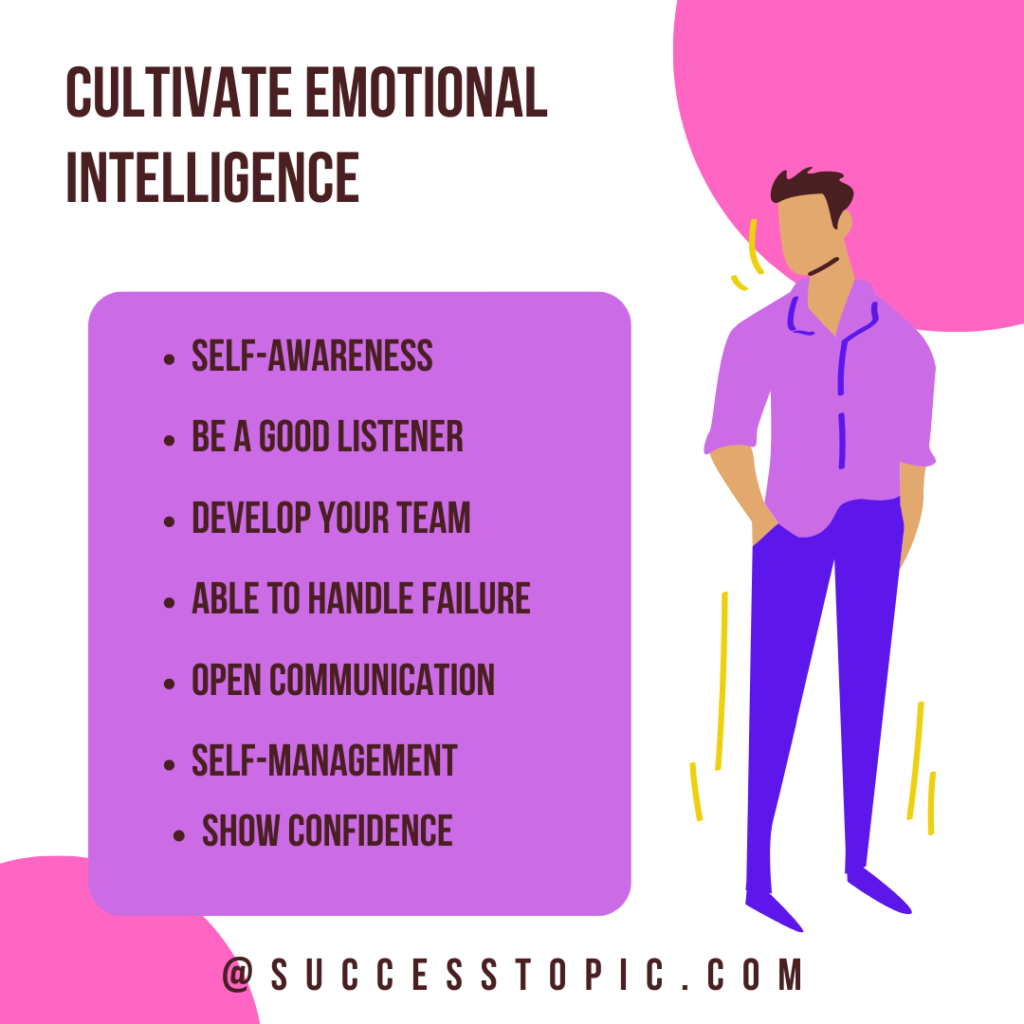
Self-awareness
The foundation of EI is self-awareness, which involves recognizing and understanding your own emotions, strengths, weaknesses, and values and how they impact others. Regularly reflecting on your emotions and their triggers can help you develop self-awareness.
Self-management
Once you know your emotions, you need to manage them effectively. This includes practicing self-control and staying calm under pressure. Techniques such as walking, drinking water, or calling a friend can help you manage your emotions better.
Empathy
Developing empathy involves understanding and sharing the feelings of others. To cultivate empathy, try to put yourself in other people’s shoes and listen actively to their concerns and emotions.
Social awareness
Social awareness involves reading the room and understanding how people feel in a given situation. To improve social awareness, pay attention to non-verbal cues, such as body language and facial expressions, and ask open-ended questions to gain insights into others’ emotions and perspectives.
Relationship management
Effective relationship management requires acting based on the emotions and needs of others. This involves genuinely checking in with people and trying to understand their feelings and concerns. Building trust and rapport with your team members can enhance your relationship management skills.
By practicing these strategies, you can cultivate emotional intelligence and enhance your leadership skills, ultimately contributing to leadership success.
3. Lead by Example
Successful leaders understand the importance of leading by example. This means demonstrating the behaviors, work ethic, and attitude that you expect from your team members. By modeling these qualities, you can inspire your team to follow suit and create a positive work environment.
Leading by example is crucial for inspiring and motivating others. Here are some ways you can lead by example and set a strong foundation for your team:
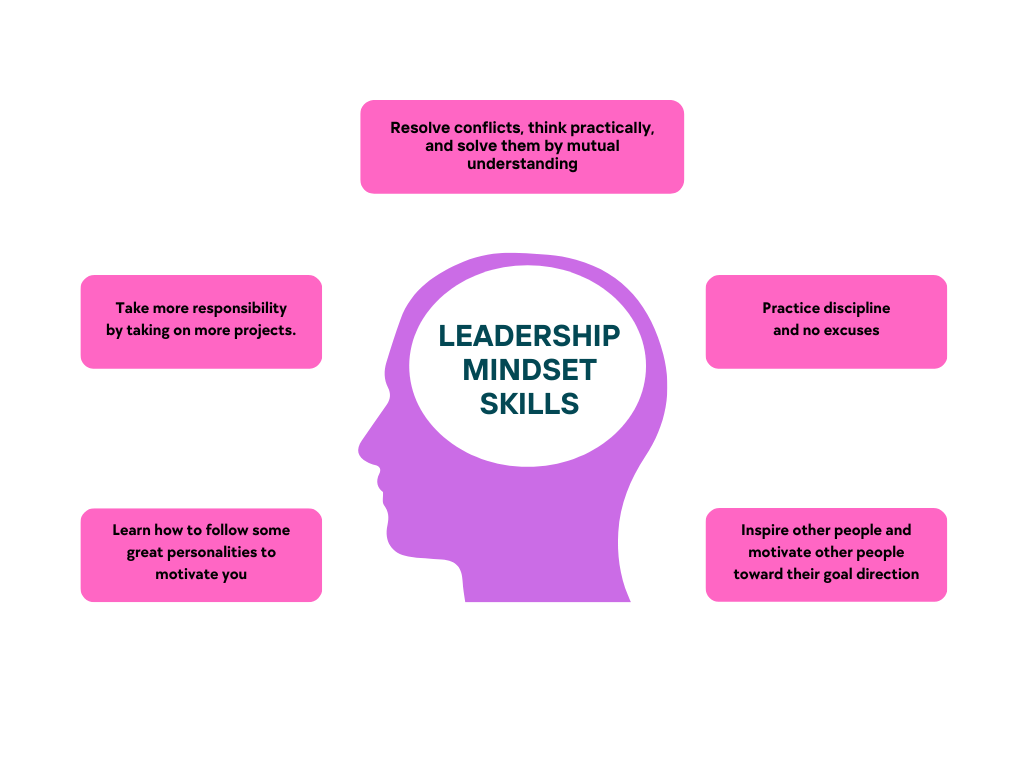
Maintain a strong work ethic.
Show your dedication and commitment by consistently putting in the effort and delivering high-quality work. This sets the standard for others to follow.
Display a positive attitude.
Approach challenges with a can-do mindset and remain optimistic even in difficult situations. A positive attitude can be contagious and help create a supportive work environment.
Be open to feedback and learning.
Demonstrate your willingness to grow and improve by actively seeking feedback and embracing learning opportunities. This encourages others to do the same and fosters a culture of continuous improvement.
By embodying these qualities, you can effectively lead by example and inspire those around you to strive for excellence.
4. Foster a Culture of Open Communication and Collaboration
Open communication and collaboration are essential for leadership success. Encourage your team members to share their ideas, concerns, and feedback, and create an environment where everyone feels comfortable doing so. This can lead to increased innovation, improved problem-solving, and a more engaged and motivated team.
Fostering open communication is essential for building a collaborative and transparent work environment. Here are some ways to encourage open communication within your team:
Hold regular team meetings
Schedule consistent team meetings to discuss updates, share progress, and address any concerns. This provides a structured opportunity for team members to communicate and stay informed.
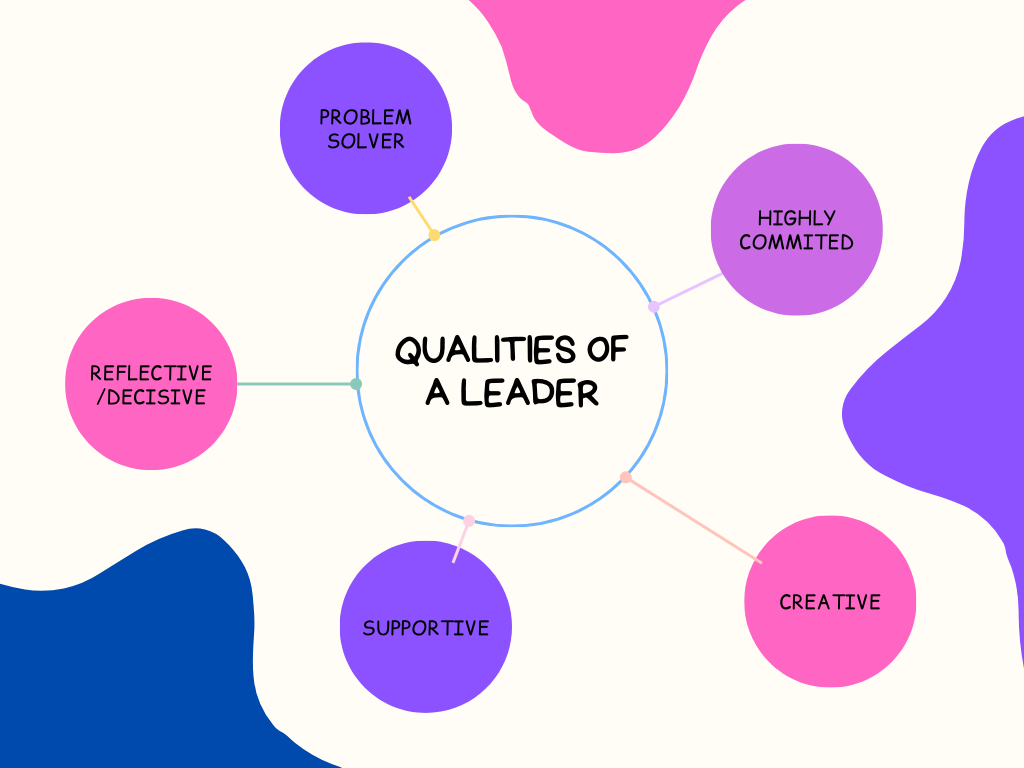
Implement an open-door policy.
Encourage team members to approach you or other leaders with questions, concerns, or ideas. By being approachable and receptive, you create an environment where employees feel comfortable sharing their thoughts.
Provide various communication channels.
Email, instant messaging, or collaboration platforms offer multiple ways for team members to communicate. This ensures that everyone can choose the best method for them and helps accommodate different communication styles.
Encourage active listening
Promote a culture of active listening, where team members genuinely listen to each other, ask clarifying questions, and show empathy. This builds trust and makes people more willing to share their thoughts.
Recognize and appreciate contributions.
Acknowledge and celebrate team members’ input and ideas, regardless of whether they are implemented. This reinforces the importance of open communication and encourages others to contribute in the future.
5. Empower and Develop Your Team Members
Leadership success is not only about your own growth and achievements but also about the growth and achievements of your team members. By empowering and developing your team, you can create a strong, capable workforce that is equipped to handle challenges and drive your organization toward its goals.
Empowering and developing your team members is essential for their growth and the overall success of your organization. Here are some ways to help your team members reach their full potential:
Provide opportunities for professional development
Encourage team members to attend workshops, conferences, or training programs to expand their skills and knowledge. This benefits the individual and enhances the team’s collective expertise.
Delegate tasks and responsibilities
Assign tasks and projects that challenge team members and allow them to develop new skills. Delegating responsibilities demonstrates trust in their abilities and encourages them to take ownership of their work.
Offer regular feedback and recognition.
Provide constructive feedback to help team members identify areas for improvement and recognize their achievements. Celebrating successes and acknowledging hard work boosts morale and motivates team members to continue growing.
Encourage collaboration and teamwork.
Promote a culture of collaboration, where team members work together, share ideas, and support each other. This helps build strong relationships and fosters a positive work environment.
Set clear expectations and goals.
Clearly communicate your expectations and establish achievable goals for each team member. This provides a roadmap for success and helps them understand how their work contributes to the organization’s objectives.
Be a supportive leader.
Act as a mentor and coach, offering guidance, encouragement, and resources to help team members overcome challenges and achieve their goals.
By implementing these strategies, you can empower and develop your team members, leading to increased job satisfaction, productivity, and overall success for your organization.
6. Continuously Learn and Adapt
The business world is constantly evolving, and successful leaders must be willing to learn and adapt to these changes. This includes staying up-to-date with industry trends, new technologies, and best practices. By continuously learning and adapting, you can ensure that your leadership skills remain relevant and effective in the ever-changing landscape. Consider attending workshops, conferences, and webinars or pursuing further education to enhance your leadership skills and knowledge.
In Conclusion
Achieving leadership success is a journey that requires commitment, self-reflection, and continuous learning. By following the steps outlined in this article, you can develop the skills and qualities necessary to become a successful leader who inspires and empowers their team. Remember that leadership success is not a destination but a continuous process of growth and improvement. Stay dedicated to your personal and professional development, and you will undoubtedly excel in your leadership role.



